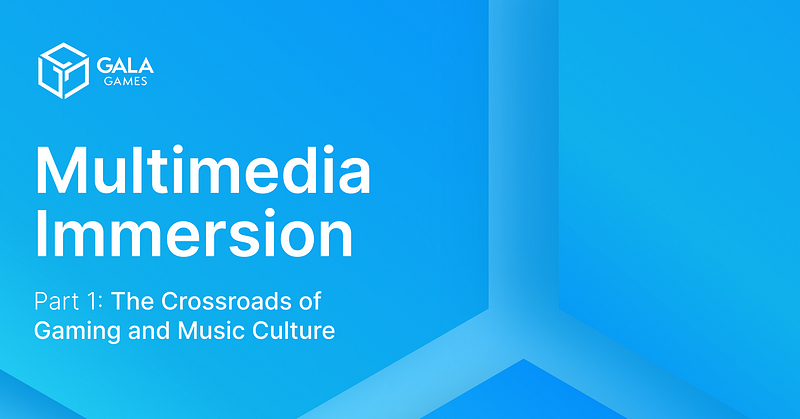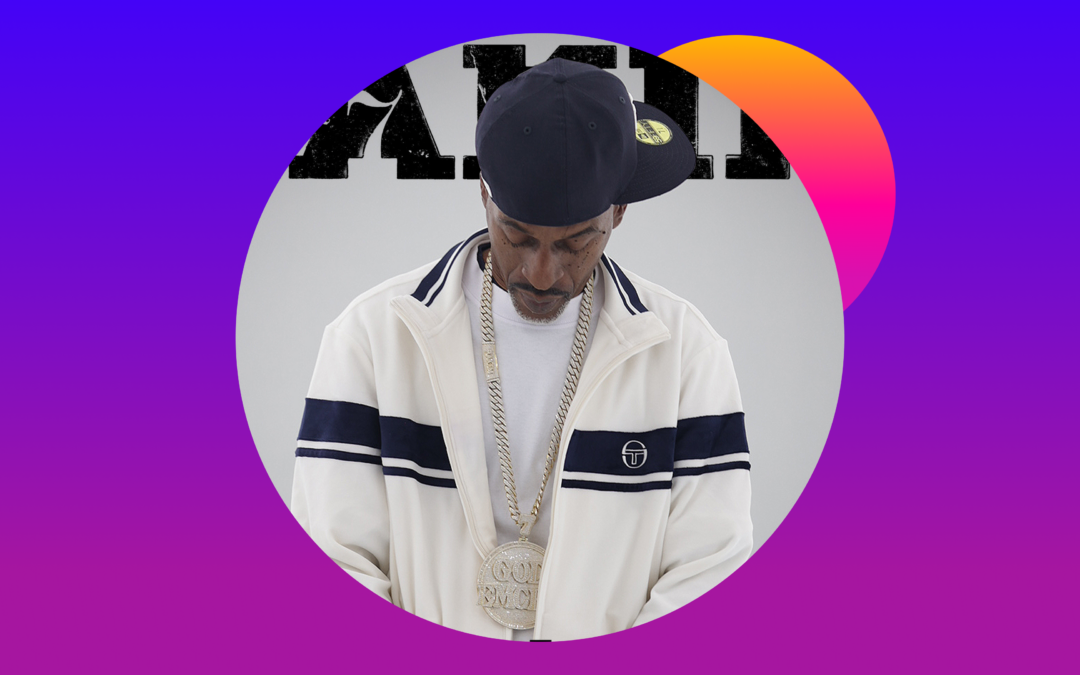
Here at Gala Games we are passionate about creating a platform and community where great games can grow and thrive. We talk a lot about how revolutionary the empowerment and personal ownership that blockchain technology offers gaming culture is, but gaming culture itself is far bigger than just gamers.
Over the next few weeks, we’re going to take a closer look at an industry and culture that intersects with gaming in incredibly key and unique ways– music. In nearly every video game ever made, music functions as a key ingredient to cook up a great gaming experience. Music’s connections with gaming run deep, and it is an absolutely essential part of the modern gaming experience.
The Soul of Gaming Culture
Gaming is a true platform for multimedia artistic expression. The craftspeople of the digital era weave together multifaceted masterpieces that focus the work of hundreds or even thousands of brilliant artists into a cohesive and engaging experience. Game design is an old art form, but as technology grows, the relatively simple, reliable mathematical theories that make for compelling game mechanics can be utilized in an infinite number of ways as the culture and artistic toolbox of games grows ever wider. This high level of multimedia collaboration continually reinvents the way games are played and enjoyed.
It’s easy to focus on the evolution of visual design and storytelling aspects throughout the relatively short history of modern gaming, but behind every great title is a soundtrack that pulls you into that world. While the visual assets and masterful coding of any game may enable you to actually tell what’s going on and experience it, music has always been a necessary component of letting you feel the game.
An Early Collaboration and Lasting Relationship
Music’s history is obviously older than modern gaming culture, but music’s interaction with video games goes far beyond what most people consider the very genesis of video games. In 1951 mathematician Chris Strachey visited the University of Manchester and was able to spend some time working with the Ferranti Mark 1– the world’s first commercially available multi-purpose computer. In his time with this cutting edge technology, Strachey wrote a simple program that played checkers and celebrated victory with a rendition of “God Save the King.” This was among the first several times in history that a computer actually had played music, and already the strong relationship between music and gaming had begun to form.
In 1972, Pong captivated the world as the first commercially successful video game. While its arcade release and subsequent home version never had musical tracks attached, the iconic sounds from the game were pioneering and began to hint how important audio would be in the evolution of video games.
As gaming technology raced ahead in those early days, the NES would set the pace for how instrumental music could be in crafting great 8-bit titles. Even with only simple MIDI technology to work with, the early pioneers of console gaming were able to reach new depths of immersive storytelling and experience through brilliant scores. During this time is when we see musical artists begin to collaborate with their tech-head counterparts to bring the full display of gaming as a multimedia artform to life. Koji Kondo’s legendary 5-track score for The Legend of Zelda, for instance, is still iconic within the culture. Even 36 years later, his compositions and themes are reused and varied to invoke the sense adventure that the franchise has always been known for, and his melodies are recognized worldwide.
These early foundational years for gaming culture found many ways that musical compositions could enhance the experience of gaming. Games like Final Fantasy used ambitious scores and lofty themes to produce atmosphere and make the world of the game feel deep and real. Other titles like Tetris added original musical tracks for their NES release and showed that music can help create a deeper experience by both adding player options and building tension in high-pressure situations.
The Multimedia Gaming Revolution
Technology barreled ahead into the 90’s, and the floodgates were open to the musical artists who had worked under such rigid restrictions in 8-bit. The arrival of The Soundblaster Pro in 1991 meant that musicians had more tools and suddenly could do so much more to bring games to life. Compositions that had to be executed with limited sounds and tones could finally go beyond simple computer beeps and add a depth to games that was previously unimaginable.
In this era, games stepped out from under their technological limitations to transition from small titles with limited scope into a massive variety of diverse genres. Complex and dynamic scores created immersive and compelling emotional accents for legendary stories like Earthbound and Final Fantasy VI, while also taking atmospheric mood building to new heights in games like Resident Evil and Castlevania: Symphony of the Night. Some designers even began to utilize new tools to focus on musical creativity within games like Mario Paint. Suddenly, the entire industry was paying serious attention to the music within games and how it helped develop and craft an engaging experience for the player.
While the culture of gaming tech had certainly been in the driver seat for those early days of video games, the 16-bit explosion was when music really began to present itself as a force to shape the culture within the gaming community. Music was no longer an afterthought, but instead a critical facet to the entire multimedia experience of gaming.
A Shared History and Evolution
As gaming culture continued to develop into the 21st century, one technological barrier after another broke down the walls that boxed in musical artists working in games. MIDI beeps gave way to full-scale digital recorded sound, which gave composers the opportunity to incorporate unrestricted musical creativity into games. Games began to bring on respected composers to craft original scores, which were inseparable pieces of the game itself.
In the early days of gaming, music helped round out the culture of gaming. As video games became more complete multimedia masterpieces, however, gaming actually began to send waves through music culture. Games like Dance Dance Revolution turned independent artists into household names by featuring them center stage (DaRude’s Sandstorm is still stuck in our heads), while the soundtracks in series like Tony Hawk’s Pro Skater and Grand Theft Auto put a spotlight on tracks for a diverse group of new listeners, causing them to rocket up the charts.
Today we see a music and gaming culture that are seamlessly intertwined. Gaming music isn’t a separate industry from the greater musical zeitgeist anymore, but talent flows freely between both mediums. Some of the top artists in the musical world have dropped tracks specifically for games or worked on scoring. These cultures have developed together over the past half century and music will continue to be a more vital piece of the puzzle that is a spectacular gaming experience.
True Multimedia Masterpieces
Gaming culture can’t just be viewed as a 2-dimensional community. The work of so many brilliant artists combine to create compelling experiences that the world of gaming is far bigger than most of us realize. The partnership between music and gaming has transformed and developed both worlds over the years, and that evolution will continue to unfold in the years to come.
Without the music that brings games to life, how would the memorable game experiences that you treasure hold up? Gaming is a truly multimedia art form, and a place where all artists can come together to collaborate and craft inspired experiences that showcase every art form. While it may not be as flashy as those cutting edge graphics, music is an irreplaceable part of the gaming experience. Music breathes life into a game, creating the memorable gaming experience that comes from authentic multimedia immersion.
Our Shared Multimedia Heritage
Just like gaming, too often the power in the music industry has been out of the hands of those who are actually passionate about the art. As cultures that work together and seamlessly intersect, we as gamers can’t simply ignore the well-known injustices that the world of music subjects both artists and fans to. We’re all in this together, and empowering artists and gamers has to include a way to empower the musicians and music-lovers who are a vital part of gaming itself.
In the rest of this series, we’ll dive deeper into how the music industry interacts with games and what the future of the music industry may look like in a world of blockchain empowerment. For our next edition, we’ll be talking to legendary composer BT– who himself has been a prominent force in the world of video game scores– about his thoughts on the future of music and our shared artistic culture.
Gala.Games






